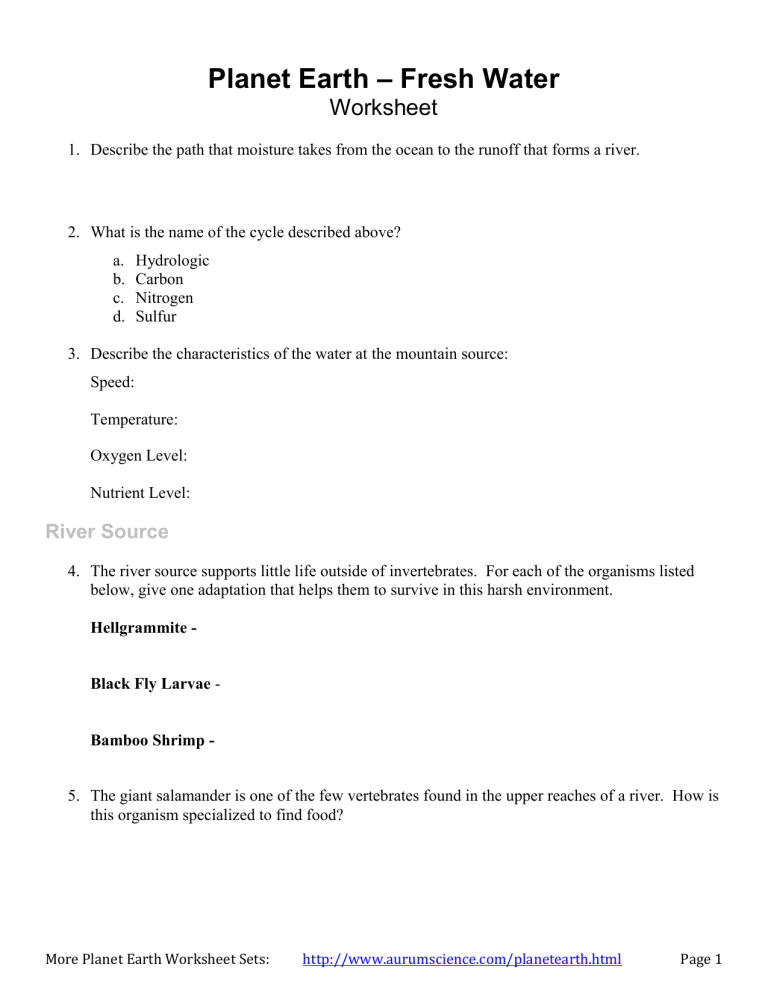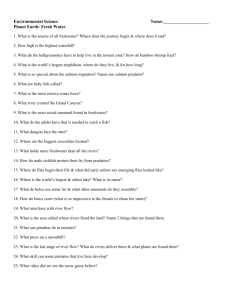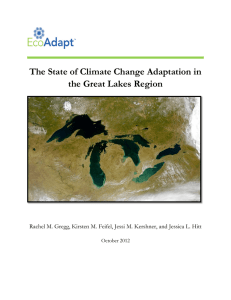Planet Earth - Freshwater worksheet

Planet Earth – Fresh Water
Worksheet
1.
Describe the path that moisture takes from the ocean to the runoff that forms a river.
2.
What is the name of the cycle described above? a.
Hydrologic b.
Carbon c.
Nitrogen d.
Sulfur
3.
Describe the characteristics of the water at the mountain source:
Speed:
Temperature:
Oxygen Level:
Nutrient Level:
River Source
4.
The river source supports little life outside of invertebrates. For each of the organisms listed below, give one adaptation that helps them to survive in this harsh environment.
Hellgrammite -
Black Fly Larvae -
Bamboo Shrimp -
5.
The giant salamander is one of the few vertebrates found in the upper reaches of a river. How is this organism specialized to find food?
More Planet Earth Worksheet Sets: http://www.aurumscience.com/planetearth.html
Page 1
6.
Salmon exhibit a behavioral adaptation – swimming upstream to their original hatching grounds.
Explain how this difficult journey gives them an advantage when breeding.
7.
Explain what adaptations are present in the grizzly bear that allow her to take advantage of the spawning salmon.
8.
What characteristic of rivers at their source gives them so much power to shape the land?
9.
What is the name of the geologic process that formed the Grand Canyon?
10.
How do rivers change as they leave their source and enter their course?
11.
River Otter are highly social animals. Give two behavioral adaptations that reflect this.
12.
Most otters are solitary. What is different about the Kaveri river ecosystem that allows them to exist in such large groups?
13.
How do rivers change as they travel even further downstream from the source?
14.
Describe an adaptation present in the Nile crocodile designed to take advantage of the migration of the wildebeest.
15.
There are 850 different types of cichlids in the African lake. The most likely explanation for this biodiversity is that they all evolved from the same original cichlid ancestor. This is an example of: a.
Divergent evolution b.
Convergent evolution c.
Parallel evolution
16.
Describe the courtship behavior of the male cichlid. Hypothesize a reason why this species would evolve such a behavior.
17.
The lake fly only live for a matter of hours once they enter their final stage of metamorphosis.
What is the purpose of the short-lived adult stage?
18.
The sponges found in Lake Baikal are filter feeders. Why might gathering energy in this way be an advantage over photosynthesis in this part of the lake?
19.
Why is the mouth of the Amazon river especially rich in life?
20.
Why might females botos look for displays such as lifting large rocks as a way to choose a mate?
21.
What part of rivers are waterfalls usually found?
22.
Plant species undergo the process of evolution, just like animals. Describe an adaptation found in the Victoria Giant Water Lily .
23.
Describe one adaptation present in the dorados .
24.
Describe one adaptation present in the piranhas .
25.
Explain what a delta is, and what part of the river they are found in.
26.
How have crab-eating Macaques adapted specifically to living in mangrove forests?







